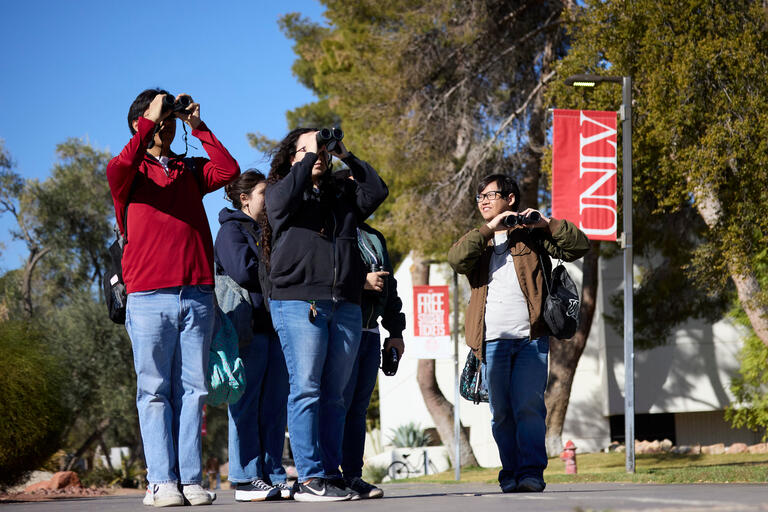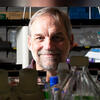
School of Life Sciences News
Life sciences involves studies of living organisms and their life processes, including their evolution and relationships with other living organisms and our planet. The courses and programs offered by the School of Life Sciences are designed for those students pursuing professional careers in medicine, science, and science education.
Current Life Sciences News

Chill vibes and a focus on observing and preserving nature have students flocking to UNLV's Birding and Conservation Club.

While studying hibernation physiology in ground squirrels, Raizel Yankaway discovered a community that welcomes and empowers.

The top headlines featuring UNLV’s staff and students.

President Chris Heavey recognizes 10 students for their staunch commitment to academic excellence and service to the community.

The first Neuroscience Research Showcase brings together experts across disciplines to share their work and spark new collaborations.

Life Sciences professor Drew Peltier explores how trees grow, survive, and reproduce despite poor conditions — and when they might not recover.
Life Sciences In The News

A trio of Nevada professors is working with NASA to investigate what drives life deep underground, hoping to create a better understanding of how ecosystems can thrive miles beneath the surface of Earth— and potentially on other planets.

The Nevada team, which will include researchers from the Desert Research Institute, the University of Nevada, Reno, and the University of Nevada, Las Vegas, will collect samples from underground sites in Nevada and the southwest to study how microbial communities use radiation byproducts to survive.
The cute acrobats are fun to watch—that is, until they dig through your flower beds, damage your tree trunks, or nest in your attic. Here's what you can do to get rid of squirrels on your property without harming them.

In a hot spring at Yellowstone National Park, a microbe does something that life shouldn’t be able to: It breathes oxygen and sulfur at the same time.
Take a deep breath. A flow of air has rushed into your lungs, where the oxygen moves into your bloodstream, fueling metabolic fires in cells throughout your body. You, being an aerobic organism, use oxygen as the cellular spark that frees molecular energy from the food you eat. But not all organisms on the planet live or breathe this way. Instead of using oxygen to harvest energy, many single-celled life-forms that live in environments far from oxygen’s reach, such as deep-sea hydrothermal vents or stygian crevices in the soil, wield other elements to respire and unlock energy.
Once a house fire starts, it can grow quickly and without restraint, becoming a major fire in under three minutes. House fires are a common occurrence: around 944 house fires occur every day.
Life Sciences Experts





